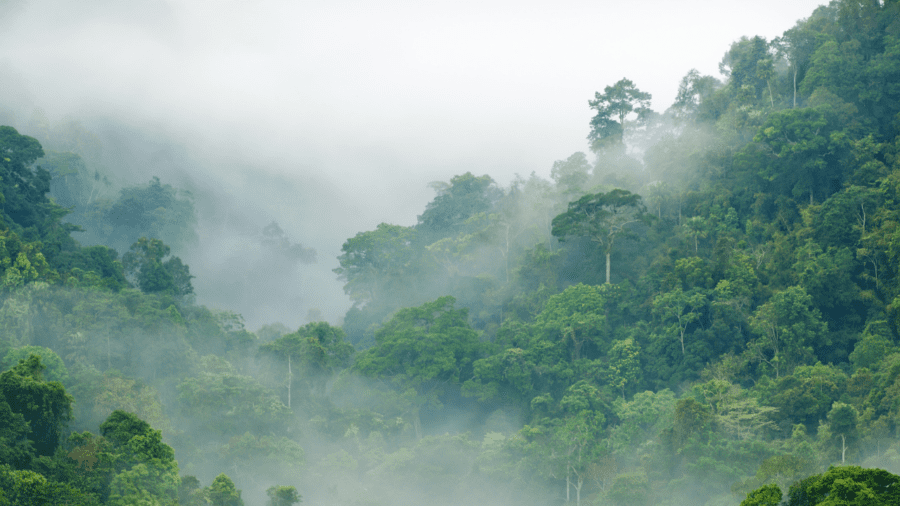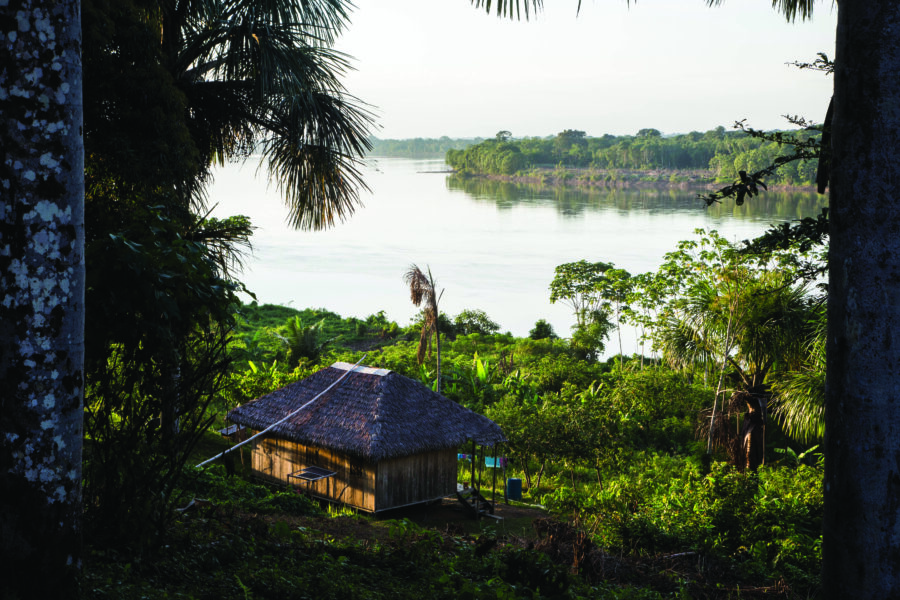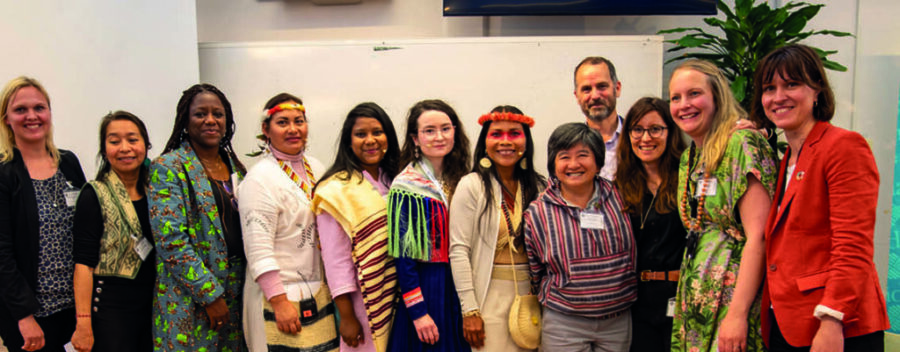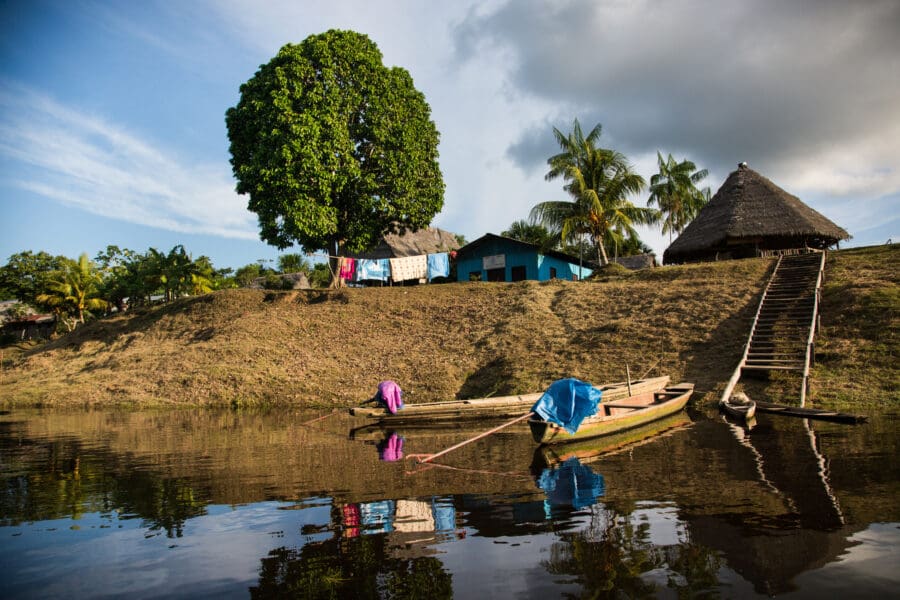New Report: Indigenous Peoples, Afro-descendant Peoples, and local communities gained legal recognition to over 100 Mha of additional lands since 2015; now own more than 11% of the world’s terrestrial land.
- The area of legally recognized community lands increased in at least 39 countries from 2015 to 2020.
- Communities made these gains despite little government or donor assistance, implying that greater investment in their rights could rapidly advance global development goals.
- Implementation of existing laws can potentially lead to community rights over 260 Mha of customary lands.
Washington, D.C. (June 15, 2023)—According to a new report by the Rights and Resources Initiative (RRI), existing national laws have the potential to recognize Indigenous Peoples’, Afro-descendant Peoples’, and local communities’ rights to own or control more than 260 million hectares (Mha) of land across the world—an area twice the size of Peru.
The report finds that at least 39 national governments increased the area under Indigenous, Afro-descendant and local community ownership or control between 2015 and 2020, resulting in legal recognition of over 100 Mha of additional community lands.
This recognition also moves the needle on total land owned by communities to over 11% of the terrestrial area of the 73 countries analyzed in the report—covering 85% of global land. Implementation of existing laws can more than double the area recognized over the 2015–2020 period.
People within Indigenous, Afro-descendant and local communities comprise up to 2.5 billion of Earth’s population and customarily hold and use at least 50% of its lands.
“These legal gains are not an accident. They are a result of years of sustained struggle and advocacy by rightsholder and civil society groups with very little direct support,” said Dr. Solange Bandiaky–Badji, coordinator of RRI.
“Our report makes it clear that much more could be achieved if governments, donors and development institutions prioritized collective tenure rights and rights-based approaches in their climate and biodiversity commitments.”
A growing body of research directly connects strong Indigenous and community land rights with lower rates of deforestation and forest degradation. The UN’s most recent report on climate emphasizes these rights as a key bulwark in both climate change mitigation and adaptation efforts. And the Kunming–Montréal Global Biodiversity Framework emphasizes their importance in efforts to stave off the escalating biodiversity extinction crisis.
“Science shows that when our communities have strong rights and protections to our ancestral lands, we protect natural ecosystems better than anyone else. Our rights must be central to global efforts to protect Earth’s climate and biodiversity,” said Gam Shimray, an Indigenous Naga leader and secretary-general of the Asia Indigenous Peoples Pact (AIPP).
“One crucial way for climate and conservation organizations and funding mechanisms to support countries’ implementation of rights-based approaches is to adopt the Land Rights Standard for their land-based actions and investments.”
The report notes that in 49 countries with available data, 1,375 Mha of Indigenous, community and Afro-descendant territories—an area the size of Antarctica—have not yet been legally recognized. These lands are rife with conflict because governments either fail to recognize or to enforce communities’ legal rights, pitting them against third parties like companies, investors or settlers who may not acknowledge or uphold community claims if they are contrary to their own interests.
Recent research also shows a direct link between secure Indigenous and community land rights and prevention of forest fires and deforestation, as fire prevention in community forests is closely linked to communities’ practicing their traditional knowledge. In addition to the unprecedented wildfires in Canada, scientists in Indonesia forecast a severe dry season—exacerbated by the El Nino weather—warning that this year’s fire season will be much worse than in the past.
“For over two decades, we have tabulated where Indigenous and community rights have been recognized, and the potential always outstrips the actual gains,” said Solange Bandiaky-Badji. “As the world quickly approaches 1.5° C of global warming, governments and donors must see investing in these groups’ rights, livelihoods and conservation as one of the most effective and efficient solutions at their disposal to fight climate change, protect nature and address social and economic inequities.”
Regional Progress
Between 2015 and 2020, Sub-Saharan Africa reported the greatest increase in legal recognition of community land rights of any region. The total area owned by Indigenous Peoples and local communities increased by 12% over the 2015 baseline.
Nearly all these known increases occurred in two countries: Kenya, which passed the 2016 Community Land Act; and Liberia, which passed the 2018 Land Rights Act recognizing customary lands.
The Democratic Republic of the Congo (DRC), advanced implementation of Local Community Forest Concessions over the 2015–2020 period and passed a historic new law recognizing the rights of the Indigenous Pygmy Peoples in 2022. In tandem with the Republic of Congo’s new Forestry Code adopted in 2020, it can propel land rights recognition in the Congo Basin, one of the world’s most important ecological resources.
Patrick Saidi, coordinator of the Dynamique des Groupes des Peuples Autochtones (DGPA), who advocated for the new law in DRC, said:
“One out of every 5 species on the planet is found in the forests of the Congo Basin, which also contain the world’s largest remaining carbon sink in the tropics. Legal recognition of rights is a critical first step, which must now be followed by effective implementation and long-term investments to support our livelihoods, build our traditional land governance and management capacities, and help us realize our conservation goals to protect our resources.”
In Asia, home to an estimated 70% of the world’s total Indigenous population, almost 98% of all recognized community-owned land is in China. Without China, the region has a lower proportion of community-owned land than either Latin America or Sub-Saharan Africa, at only 0.83%.
Two countries in particular, India and Indonesia, saw modest but insufficient progress. While communities’ recognized land area increased eighteenfold against the 2015 baseline in India and nearly sevenfold in Indonesia, the speed and scale of national recognition remains inadequate given the size of unrecognized community lands in both countries.
The report notes that Latin America has long been a regional leader in rights recognition. Yet only 21 Mha (less than 1% of land across the 16 countries analyzed in the region) was recognized as designated for or owned by communities during the 2015–2020 period. Even in legally recognized areas, many communities experienced land tenure insecurity due to unchecked invasions of their territories.
Threats to community land crystallized in Brazil, where former President Jair Bolsonaro, on his second day in office, cut funding for FUNAI, the country’s Indigenous affairs agency, and issued an executive order giving increased power to Brazil’s agricultural ministry, which supports the expansion of cattle ranching over Indigenous lands.
While the new government has pledged to respect Indigenous, Afro-descendant and community rights, legislators recently advanced a new law that would restrict Indigenous Peoples’ control over their territories.
“President Lula’s election was a political breakthrough, but Indigenous Peoples’ situation in Brazil is more critical than ever because we cannot say the same when it comes to the Brazilian legislature,” said Cristiane Julião Pankararu, an Indigenous Pankararu leader in Brazil and social anthropology expert.
“We are on the verge of losing more territories with the new Marco Temporal Bill. Brazil, and other countries beyond the Amazon basin, urgently need to recognize the rights of the Indigenous Peoples and communities who protect the biodiversity of many biomes and ecosystems. We cannot achieve global goals on climate, climate justice, biodiversity and even economic development without this fundamental step.”








